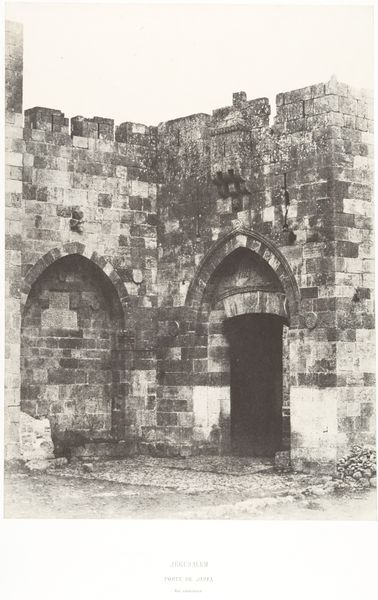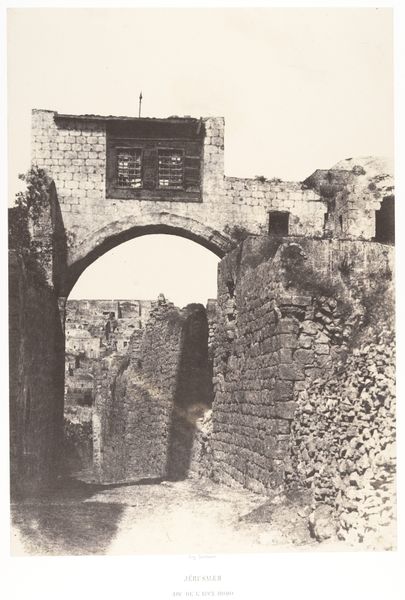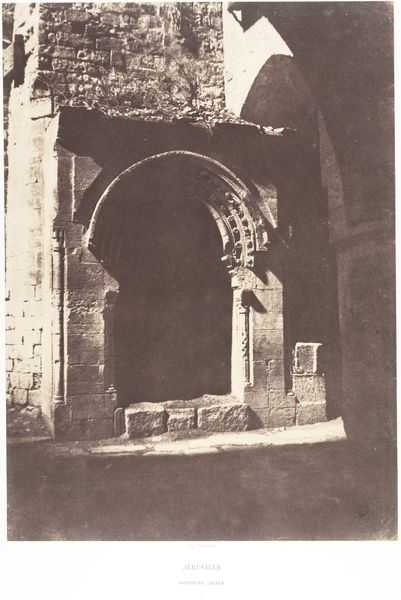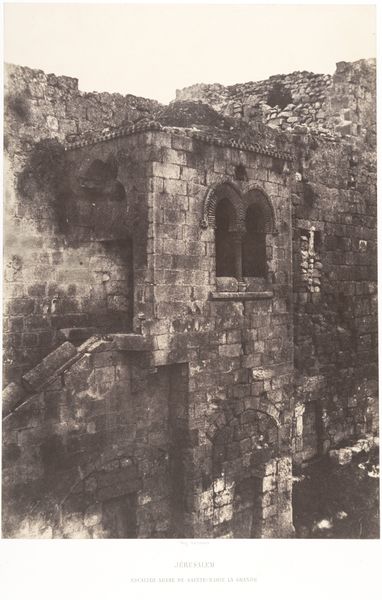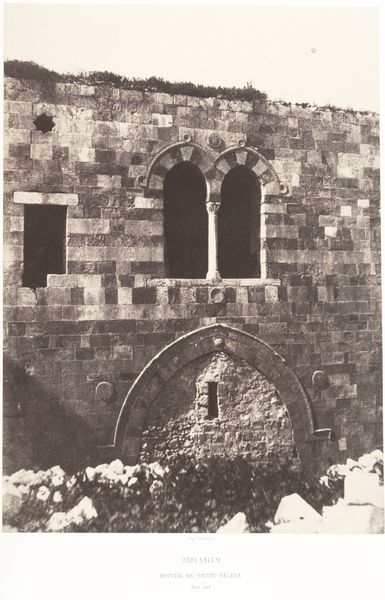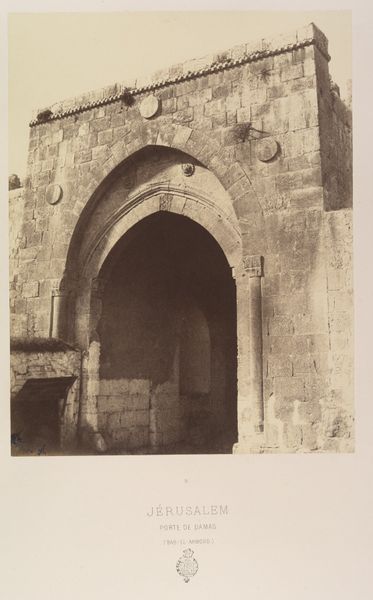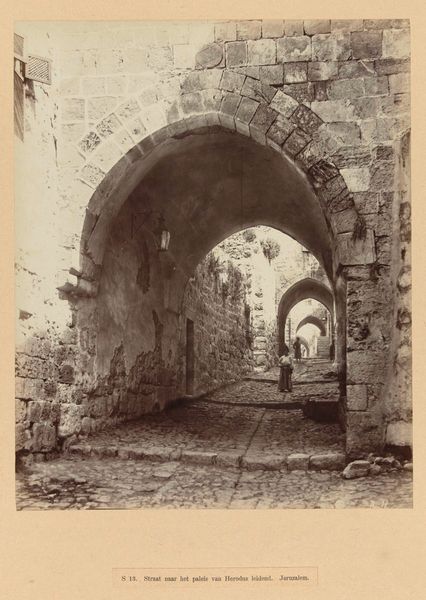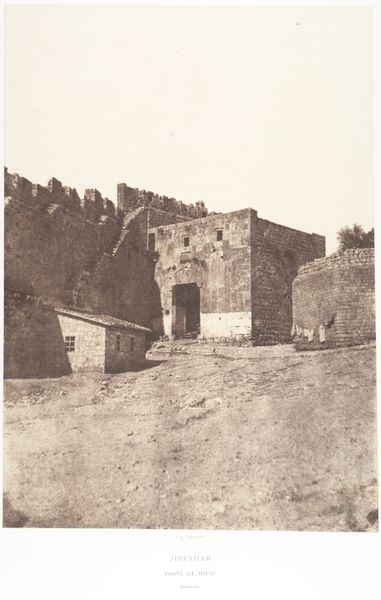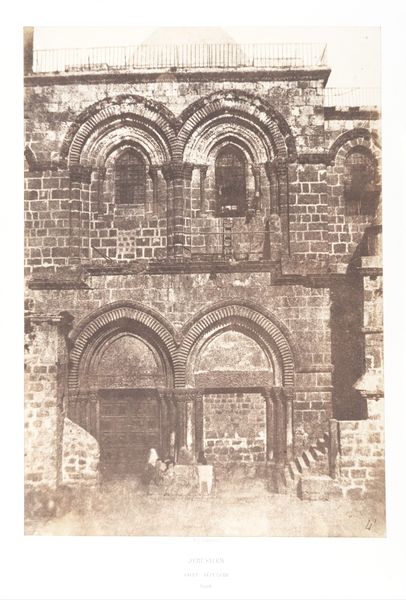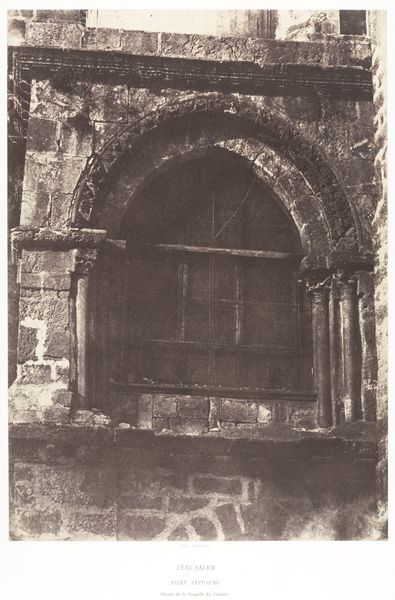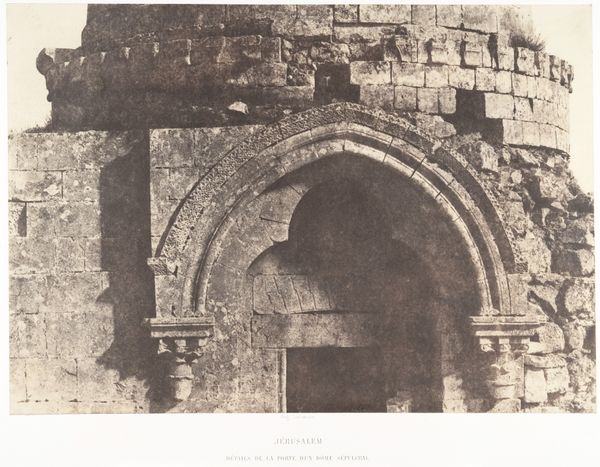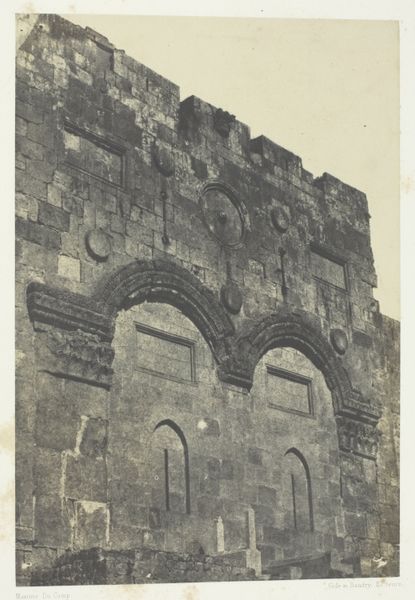
Jérusalem, Porte Saint-Étienne, Vue extérieure 1854 - 1859
0:00
0:00
daguerreotype, photography, architecture
#
daguerreotype
#
photography
#
ancient-mediterranean
#
cityscape
#
architecture
#
realism
Dimensions: Image: 32.4 x 23.7 cm (12 3/4 x 9 5/16 in.) Mount: 59.7 x 44.7 cm (23 1/2 x 17 5/8 in.)
Copyright: Public Domain
Curator: Here we have Auguste Salzmann's daguerreotype, "Jérusalem, Porte Saint-Étienne, Vue extérieure," dating from between 1854 and 1859. Editor: Oh, wow. I’m immediately struck by how… dusty it feels? It's not just the color; it's the texture of the stone, the way the light kind of clings to the wall. It feels like you could reach out and brush away centuries. Curator: That’s an interesting point. Salzmann was commissioned to document the Holy Land. Photography at this time was seen as incredibly objective. People thought of these images as scientific documents of a distant, biblically significant past, revealing layers of time. Editor: Objective, huh? Even with all this atmosphere? I mean, sure, it’s a record, but it's a mood too. Look at how that archway just swallows the light. Gives me the shivers! I almost feel like I shouldn’t peer in. Is that on purpose, you think? Curator: Perhaps subconsciously. The archaeological context is key here. There was an intense European interest in verifying biblical accounts. His photographs aimed to provide unassailable visual proof, focusing on architectural details to understand historical truths and challenge existing narratives of Jerusalem. Editor: Okay, history and proof and all that are super important, of course, but I'm wondering what it meant for Salzmann himself, standing there with this big clunky camera in the baking sun. Did he ever feel overwhelmed by all this ancient history pressing down on him? Because, looking at it now, I am! Curator: That is a good question, though his personal feelings might not be as apparent. Consider though, photography was being shaped by the politics of archaeology. There was a drive to present these sites as authentic through very specific visual framing. Editor: I see your point about how context matters. Thinking about it that way, the image feels almost colder somehow. Like the gate's just an artifact. Curator: Exactly. So when looking at these incredible early photographs we can appreciate them aesthetically but always keep in mind how socio-political concerns were influencing them. Editor: Well, I'm leaving here definitely seeing it a little different, thinking about dust and empires and photographic truth.
Comments
No comments
Be the first to comment and join the conversation on the ultimate creative platform.
